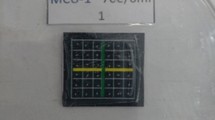Summary
Natural selection at high densities has often been postulated to favour the evolution of greater efficiency of food use. Contrary to this expectation, a previous study suggested the existence of a trade-off between larval feeding rate and efficiency at using food to complete larval development in populations ofDrosophila melanogaster subjected to crowding for many generations. In this paper, we confirm the generality of such a density-dependent trade-off between food acquisition and utilization by demonstrating its occurrence in a new set ofDrosophila populations subjected to extreme larval crowding. We suggest that such trade-offs between food acquisition and food use may represent a general phenomenon in organisms exhibiting scramble competition. We test and reject the possible mechanistic explanation that decreased efficiency of food use in faster-feeding larvae may merely be a consequence of a faster passage of food through the gut, leading to incomplete assimilation of nutrients and energy.
Similar content being viewed by others
References
Anderson, W.W. (1971) Genetic equilibrium and population growth under density regulation.Am. Nat. 105 489–98.
Bierbaum, T.J., Mueller, L.D. and Ayala, F.J. (1989) Density-dependent life history evolution inDrosophila melanogaster.Evolution 43 382–92.
Boyce, M.S. (1984) Restitution ofr- andK-selection as a model of density-dependent natural selection.Ann. Rev. Ecol. Syst. 15 427–47.
Burnet, B., Sewell, D. and Bos, M. (1977) Genetic analysis of larval feeding behaviour inDrosophila melanogaster. II. Growth relations and competition between selected lines.Genet. Res. 30 149–61.
Charlesworth, B. (1971) Selection in density-regulated populations.Ecology 52 469–74.
Chiang, H.C. and Hodson, A.G. (1950) An analytical study of population growth inDrosophila melanogaster.Ecol. Monogr. 20 173–206.
Clarke, B. (1972) Density-dependent selection.Am. Nat. 106 1–13.
Freeman, M.F. and Tukey, J.W. (1950) Transformations related to the angular and the square root.Ann. Math. Stat. 21 607–11.
Guo, P.Z., Mueller, L.D. and Ayala, F.J. (1991) Evolution of behavior by density-dependent natural selection.Proc. Natl. Acad. Sci. USA 88 10905–6.
Joshi, A. and Mueller, L.D. (1988) Evolution of higher feeding rate inDrosophila due to density-dependent natural selection.Evolution 42 1090–3.
Joshi, A. and Mueller, L.D. (1993) Directional and stabilizing density-dependent natural selection for pupation height inDrosophila melanogaster.Evolution 47 176–84.
Leroi, A., Chippindale, A.K. and Rose, M.R. (1994) Long-term laboratory evolution of a genetic trade-off inDrosophila melanogaster. I. The role of genotype × environment interaction.Evolution 48 1244–57.
Luckinbill, L.S. (1978)r- andK-selection in experimental populations ofEscherichia coli.Science 202 1201–3.
MacArthur, R.H. and Wilson, E.O. (1967)The Theory of Island Biogeography. Princeton University Press, Princeton, NJ.
Mueller, L.D. (1987) Evolution of accelerated senescence in laboratory populations ofDrosophila.Proc. Natl Acad. Sci. USA 84 1974–7.
Mueller, L.D. (1988a) Density-dependent population growth and natural selection in food limited environments: theDrosophila model.Am. Nat. 132 786–809.
Mueller, L.D. (1988b) Evolution of competitive ability inDrosophila due to density-dependent natural selection.Proc. Natl. Acad. Sci. USA 85 4383–6.
Mueller, L.D. (1990) Density-dependent natural selection does not increase efficiency.Evol. Ecol. 4 290–7.
Mueller, L.D. (1991) Ecological determinants of life-history evolution.Phil. Trans. R. Soc. Lond. B 332 25–30.
Mueller, L.D. and Ayala, F.J. (1981) Trade-off betweenr-selection andK-selection inDrosophila populations.Proc. Natl Acad. Sci. USA 78 1303–5.
Mueller, L.D. and Sweet, V.F. (1986) Density-dependent natural selection inDrosophila: evolution of pupation height.Evolution 40 1354–6.
Mueller, L.D., Guo, P.Z. and Ayala, F.J. (1991) Density-dependent natural selection and trade-offs in life history traits.Science 253 433–5.
Mueller, L.D., Graves, J.L. and Rose, M.R. (1993) Interactions between density dependent and age-specific selection inDrosophila melanogaster.Funct. Ecol. 7 469–79.
Pianka, E.R. (1970) Onr- andK-selection.Am. Nat. 104 952–6.
Rose, M.R. (1984) Laboratory evolution of postponed senescence inDrosophila melanogaster.Evolution 38 1004–10.
Roughgarden, J. (1979)Theory of Population Genetics and Evolutionary Ecology: An Introduction. Macmillan, New York.
Sameoto, D.D. and Miller, R.S. (1968) Selection of pupation site byDrosophila melanogaster andD. simulans.Ecology 49 177–80.
Scribner, J.M. and Slansky, F. (1981) The nutritional ecology of immature insects.Ann. Rev. Entomol. 26 183–221.
Sewell, D., Burnet, B. and Connolly, K. (1975) Genetic analysis of larval feeding behaviour inDrosophila melanogaster.Genet. Res. 24 163–73.
Travis, J. and Mueller, L.D. (1989) Blending ecology and genetics: progress toward a unified population biology. InPerspectives in Ecological Theory (J. Roughgarden, R.M. May and S.A. Levin, eds), pp. 101–24. Princeton University Press, Princeton, NJ.
Author information
Authors and Affiliations
Rights and permissions
About this article
Cite this article
Joshi, A., Mueller, L.D. Density-dependent natural selection inDrosophila: Trade-offs between larval food acquisition and utilization. Evol Ecol 10, 463–474 (1996). https://doi.org/10.1007/BF01237879
Issue Date:
DOI: https://doi.org/10.1007/BF01237879




